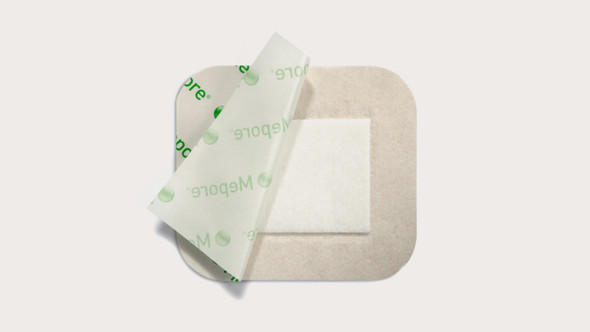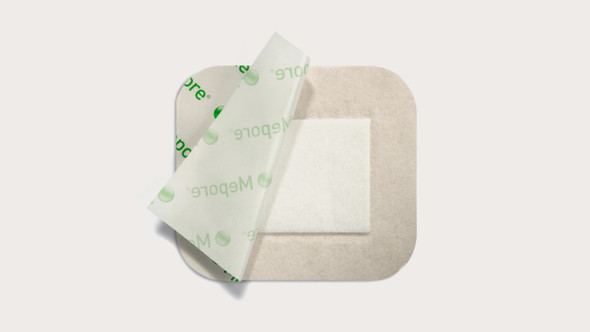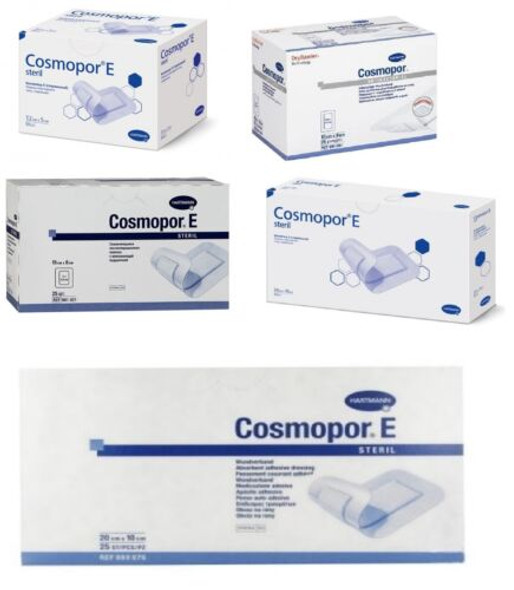Description
Breathable, Mepore® is a self-adherent dressing that absorbs blood and exudate. The backing film is water-repellent that covers and protects the wound from outside contamination. Mepore is a skin friendly adhesive that provides gentle fixation. Easy to use, it is conformable and comfortable for the patient.
- Skin friendly adhesive for gentle fixation and removal of the dressing
- Conformable and comfortable for the patient
- Absorbs blood and exudates
- Water-repellent that covers and protects from outside contamination
FAQ
Mepore is a type of adhesive dressing that is commonly used in wound care. It is a sterile, self-adhesive dressing made of a flexible, nonwoven fabric that is permeable to air and water vapor. The dressing has a layer of absorbent pad in the center that helps to absorb exudate from the wound.
Mepore dressings are used to cover and protect a wide range of wounds, including surgical wounds, abrasions, lacerations, and burns. They can also be used as a secondary dressing to hold in place other wound care products such as gels or ointments. Mepore dressings are designed to be gentle on the skin, while also providing a secure and comfortable fit that promotes healing and helps to prevent infection.
It's important to note that Mepore dressings should only be used under the guidance of a healthcare professional, who can determine the appropriate wound care protocol for a specific patient and ensure that the dressing is applied correctly.
Mepore dressings are designed to adhere to the surrounding skin, rather than sticking to the wound itself. The adhesive used in Mepore dressings is gentle and hypoallergenic, which means it is less likely to cause skin irritation or damage when the dressing is removed.
However, if the wound is heavily exudating, the dressing may stick to the wound bed, which can cause discomfort and possible trauma when the dressing is removed. In such cases, it is important to gently moisten the dressing with saline solution or water to help release it from the wound bed before removing it.
It's important to note that Mepore dressings are not suitable for all types of wounds, and they should only be used under the guidance of a healthcare professional. Some wounds may require a different type of dressing or wound care protocol to promote healing and prevent infection.
Yes, Mepore dressings are designed to be water-resistant, which means that patients can shower or bathe while wearing the dressing without having to worry about the dressing falling off or getting wet. However, it is important to note that excessive exposure to water can reduce the adhesive quality of the dressing, which may cause it to become loose or fall off prematurely.
To help prevent the dressing from getting wet or becoming loose during showering or bathing, it's recommended to use a protective covering, such as a waterproof tape or a plastic wrap, to cover the dressing. This will help to keep the dressing dry and secure, while also preventing any water from penetrating the dressing and causing the wound to become wet.
It's important to follow the instructions of your healthcare provider regarding the appropriate care and maintenance of the dressing, as well as any precautions that you should take to protect the wound during showering or bathing.
The frequency of changing a Mepore dressing depends on the type and severity of the wound, as well as the level of exudate present. In general, healthcare providers will recommend changing Mepore dressings at least once a day or more frequently if the dressing becomes soiled or saturated with wound exudate.
If the wound is heavily exuding, the dressing may need to be changed more frequently to ensure that the wound remains clean and dry. In some cases, the dressing may need to be changed several times a day to keep the wound covered and protected.
It's important to follow the instructions of your healthcare provider regarding the appropriate frequency of changing the dressing, as well as the proper technique for removing and applying the dressing. Changing the dressing too frequently or too infrequently can disrupt the healing process and increase the risk of infection.
Mepore dressings are designed to be water-resistant, but not completely waterproof. This means that the dressing can withstand exposure to water, such as during showering or bathing, without losing its adhesive properties or falling off. However, excessive exposure to water can cause the dressing to become loose or fall off prematurely, which can compromise the integrity of the wound and increase the risk of infection.
To help protect the dressing from excessive exposure to water, it's recommended to cover the dressing with a waterproof covering, such as a waterproof tape or plastic wrap, during activities such as swimming or soaking in a bathtub. This will help to prevent water from penetrating the dressing and reaching the wound, while also helping to keep the dressing in place.
It's important to follow the instructions of your healthcare provider regarding the appropriate care and maintenance of the dressing, as well as any precautions that you should take to protect the wound during water-related activities.
To remove a Mepore dressing, it's important to follow the appropriate technique to minimize the risk of pain, trauma, and damage to the wound and surrounding skin. Here are the general steps for removing a Mepore dressing :
- Wash your hands thoroughly with soap and water before touching the dressing.
- Gently lift one corner of the dressing, and slowly peel it back in the direction of hair growth, taking care not to pull it off abruptly.
- If the dressing sticks to the wound or surrounding skin, gently moisten it with sterile saline solution or water to help release it.
- Support the skin and wound with one hand while removing the dressing with the other hand to minimize discomfort or pain.
- Dispose of the used dressing in a proper waste container, and wash your hands again.
It's important to note that if the wound is heavily exuding, the dressing may adhere to the wound bed, making it more difficult to remove. In such cases, it may be necessary to gently moisten the dressing with sterile saline solution or water to help loosen it before removing it.
If you experience any pain, discomfort, bleeding, or signs of infection during or after dressing removal, contact your healthcare provider immediately for further guidance and care.















